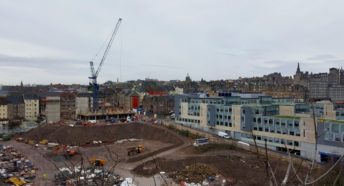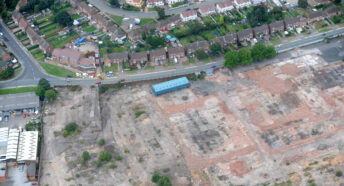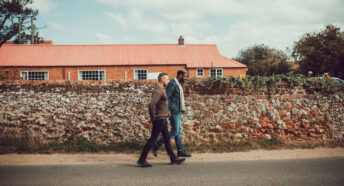It all starts at home: a healthy homes bill
Here at CPRE, the countryside charity, we believe everyone needs a secure, well-designed and affordable place to live.
We’re all too aware of the impacts of poor housing conditions on people’s physical and mental health and wellbeing, the importance of which has been emphasised by the coronavirus pandemic. Overcrowding, poor design and lack of gardens or access to green space are just a few factors that have contributed to the decline in some people’s physical and mental health over this period.
It might seem odd for a countryside charity to be concerned about housing, but we know that meeting housing need efficiently helps to stop inappropriate development on land that is so valuable to us. And the better housing is designed for efficient energy use, the better to help us resist climate change.
Yet, despite the overall consensus around the importance of good quality housing in making sure that people, communities and economies are healthy and resilient, too many poorly designed homes and neighbourhoods are still being built across the country.
The Housing Design Audit for England we conducted with Place Alliance shows that 75% of new housing development should have been refused planning permission due to mediocre or poor design — a number which rises to a shocking 94% in rural areas.
In particular, developments that rely on residents having access to a car, with poor access to either public transport or with a lack of services easily reachable by walking, were among the most problematic issues identified across all schemes. From this, it’s clear that the way we regulate the built environment needs radical change.
Healthy Homes Act campaign
These issues are why we’re proud to support the Town and Country Planning Association’s Healthy Homes Act campaign calling for a new piece of legislation: a Healthy Homes Bill.
By enshrining a series of 11 basic ‘healthy homes principles’ into law, this bill would put individuals and communities’ health and wellbeing at the heart of government decision-making on planning and building control. Addressing issues such as accessibility, access to green space, sustainable transport, resilience to climate change and freedom from air, noise and light pollution, these principles, at an absolute minimum, define a healthy home and neighbourhood.
The bill also establishes a place-based approach, which means that it addresses housing in a way that targets the requirements of individual communities. It achieves this through a legal obligation that enables local authorities to plan for the full range of housing needs in their area, with a particular emphasis on the provision of genuinely affordable homes.
In doing so, it also redefines the notion of ‘affordable’ to be based on local incomes, enabling planning authorities to meet the real housing needs of their communities, and ensure the right homes are built in the right places.
Rural areas are too expensive for key workers
Currently, private rents in rural areas are so high that many towns and villages have become unaffordable to people on average and below-average incomes, including key workers.
From care workers to hospital porters, bus drivers to social workers, the pandemic has highlighted the critical role of our key workers who make up a third of all employed people in rural communities. Yet 9 in 10 rural areas are too expensive for them to live in.
Recent CPRE analysis found that average private rents are unaffordable for care workers in 96% of rural local authorities, forcing them out of the very countryside communities they serve.
However, at current build rates, it will take more than 150 years to clear social housing waiting lists, which is why the emphasis on genuinely affordable housing within the Healthy Homes Bill is so significant.
Proposed changes to the planning system
Campaigning for a Healthy Homes Bill is particularly important in the context of the proposed changes to our planning system, announced by the government in its white paper Planning for the Future. CPRE has serious concerns about the capacity of these proposed changes to deliver well-designed and sustainable affordable homes and neighbourhoods where they’re needed the most.
We also believe that the 2050 target, proposed in the white paper, for all new homes to be zero-carbon is too distant and needs to be more ambitious if we are to achieve the reductions in carbon emissions we need to tackle the climate emergency.
Introducing a duty for the secretary of state to secure the health, safety and wellbeing of individuals and communities, as proposed by this bill, could set the tone for delivering the changes our planning system really needs.
Providing good quality homes and neighbourhoods for all is the key to unlocking the potential of the UK, levelling up the country and preparing it for the challenges of climate change and future pandemics. This is why we, at CPRE, the countryside charity, strongly support the Healthy Homes Act campaign.
After all, it all starts at home.
For more information on the campaign, please visit the Town and Country Planning Association’s website or contact Jack Dangerfield at jack.dangerfield@tcpa.org.uk.











